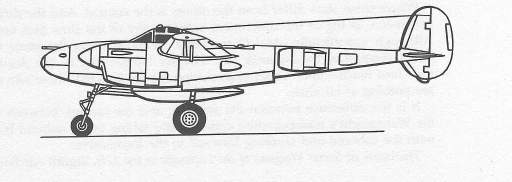PC Pilot
The Complete Guide to Computer Aviation
by Steve Smith
CHAPTER TEN
DYNAMIX'S ACES OVER EUROPE AND ACES OF THE PACIFIC
The Big Picture…One Sortie at a Time
The next three sims under review—Aces Over Europe and Aces of the Pacific (in this chapter), and Red Baron (in the next)—are all the work of Dynamix's talented Damon Slye.
Like no others, these three sims are proof that the auteur theory (see Chapter One) is alive and well. The look and feel (that is, the graphics, interface, and flight model), the game play, the menu structure, even the sound effects, are singular, consistent, and first-rate.
Where these sims differ from the others is the context. And the differences are enormous, as big as the differences between any of the sims thus far described. Although superficially, Aces Over Europe seems to cover the same territory as Secret Weapons of the Luftwaffe (see Chapter Nine)—that is, the death throes of the Third Reich—upon closer examination it's obvious that these two simulations are nothing at all alike.
It is the difference between the strategic and the tactical, between decimating the Wehrmacht's transportation capacity and taking out a railroad train starting with the caboose and working forward to the locomotive.
The heart of Secret Weapons of the Luftwaffe is the U.S. Eighth Air Force's strategic raids on Germany's heavy industry. In Aces Over Europe, it is on the Ninth and Second Air Forces' tactical strikes against specific "pinpoint" targets, beginning with raids in northern France in preparation for the D-Day invasion, and later, as the front line raged inexorably eastward, in the Benelux countries, and finally into the Fatherland itself.



The shift is more than from the general to the specific—it is from the Big Picture to a single sortie, from organization charts to individual pilots. All three of Slye's sims start with the rosters of aces—American, Canadian, British, French, German, and Japanese—who fought their wars in cockpits, not command bunkers.
In the European Theater, the number of "victories" (kills) varies widely, depending on which service an ace flew for. As the situation deteriorated for the Luftwaffe, they concentrated their best pilots in elite squadrons equipped with the best aircraft…and threw barely trained recruits into "suicide" squadrons that were little more than aerial cannon fodder. Few cadets survived beyond their first few missions.
Aces Over Europe credits Gunther Rall with 275 victories, mostly on the Eastern Front, where the Russian Yaks made easy targets. (Most historians recognize Erich Hartmann as the top German ace, with 352 kills.) Nor did Luftwaffe aces wind up flying desks—the Luftwaffe's fighter chief, Adolph Galland, continued to fly as a general, racking up a total of 104 kills.
There was a friendly rivalry between the two top American fighter wings in Europe, Hubert Zemke's 56th ("Wolfpack") and Don Blakeslee's 4th ("Eagle") Fighter Groups. The 56th's Francis ("Gabby") Zabreski, was top gun, with 28 kills, all in a Republic P-47 Thunderbolt (he scored another 6 in Korea). His closest rival: Don Gentile, of the 4th, who switched from a "Jug" to a Mustang and scored 22 victories. The top P-51 ace was George Preddy, of the 352nd Fighter Group, with 27 kills (including 6 in one day) before he was shot down and killed by friendly fire on Christmas Day, 1944.
Most of the British heroes of the Battle of Britain, like Douglas Bader (who flew with two wooden legs), were either dead or burned out. By the end of the war, the RAF's top ace was Johnnie Johnson (38 kills), who led an all-Canadian squadron. In second place was an expatriate Frenchman, Pierre Closterman, flying Spitfires and Hawker Tempests, with 33. Third was A. G. ("Sailor") Milan, a Battle of Britain survivor (with whom you can dogfight in Their Finest Hour; see Chapter Thirteen), with 32.
Table of Contents | Previous Section | Next Section
